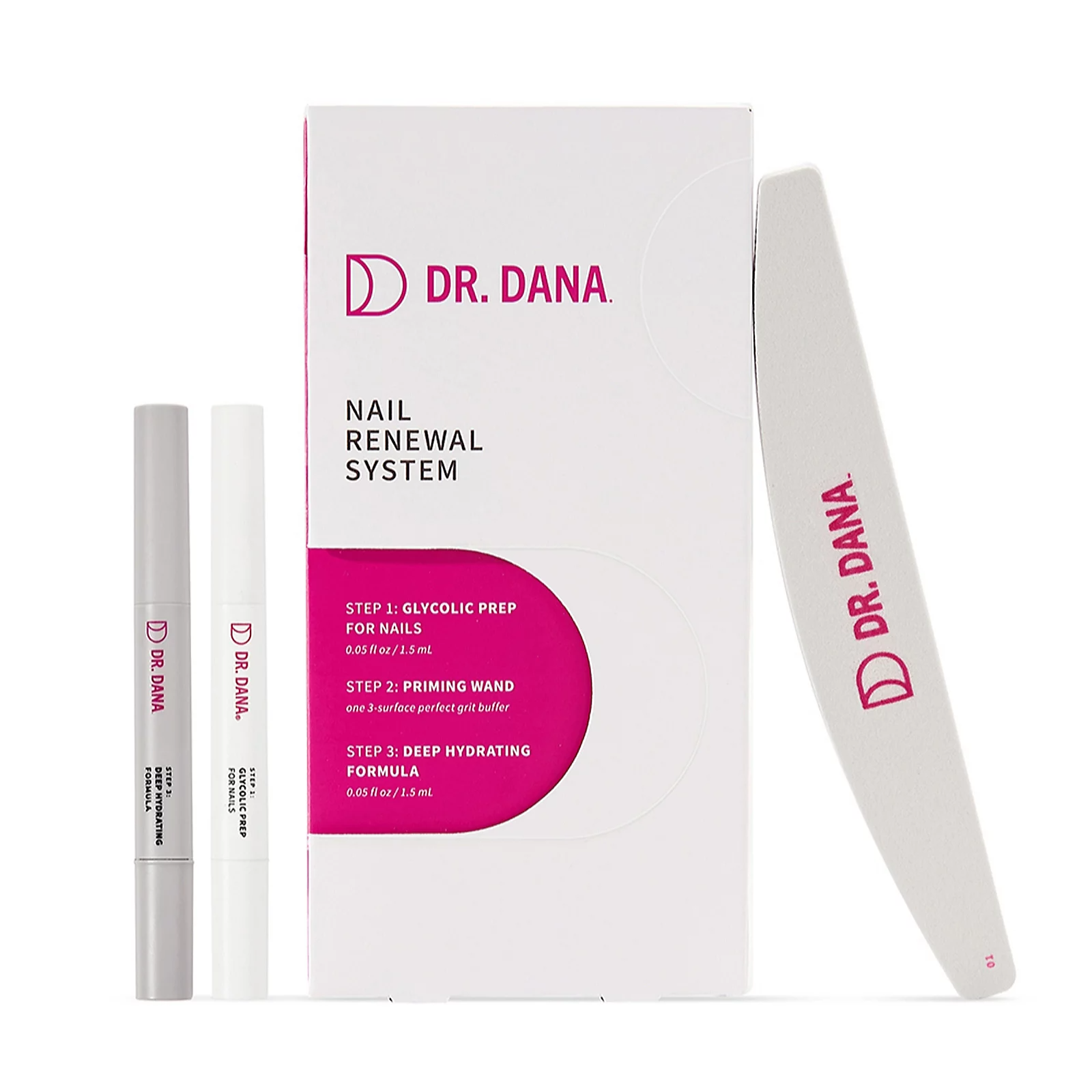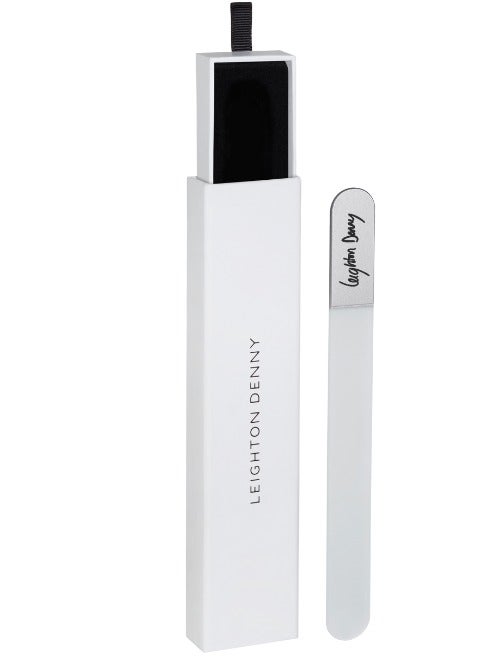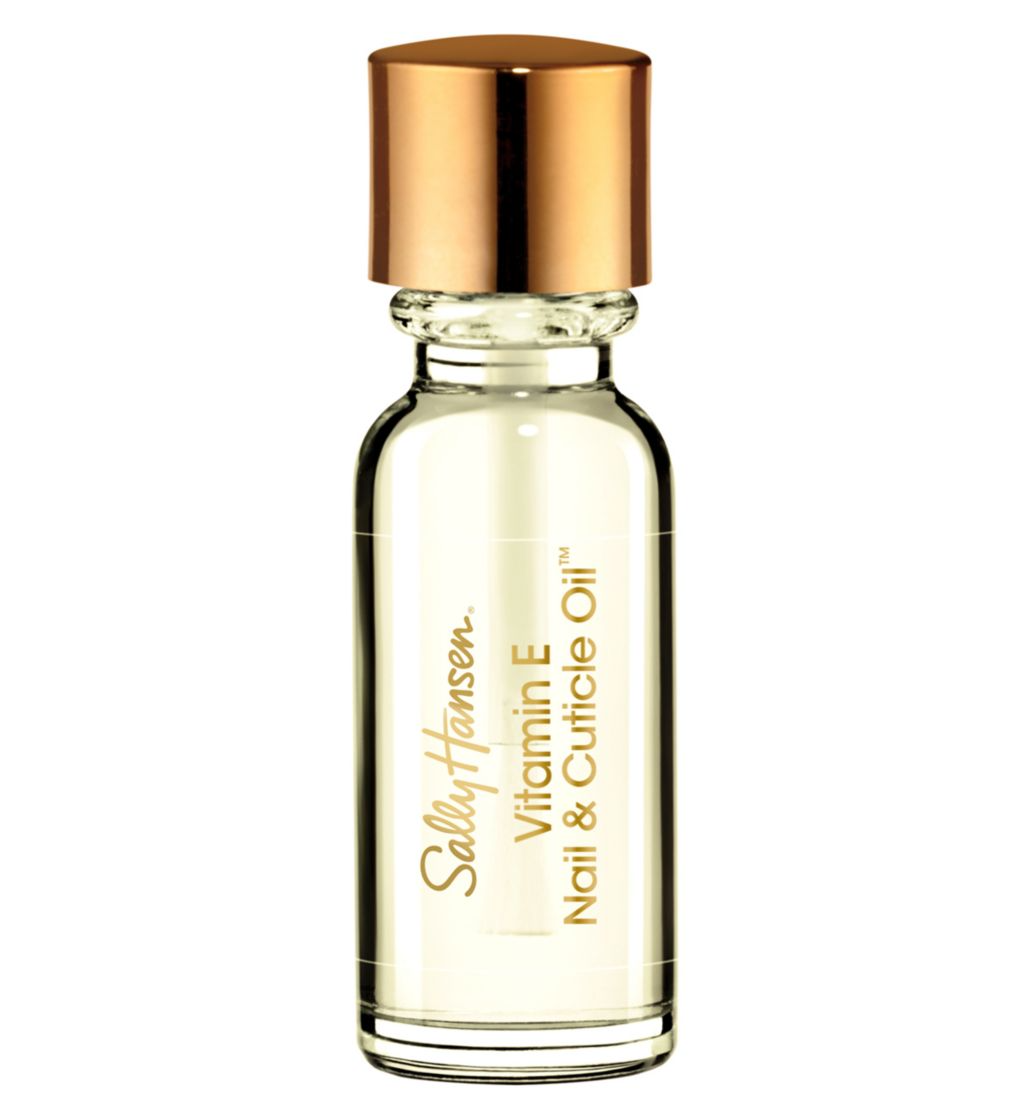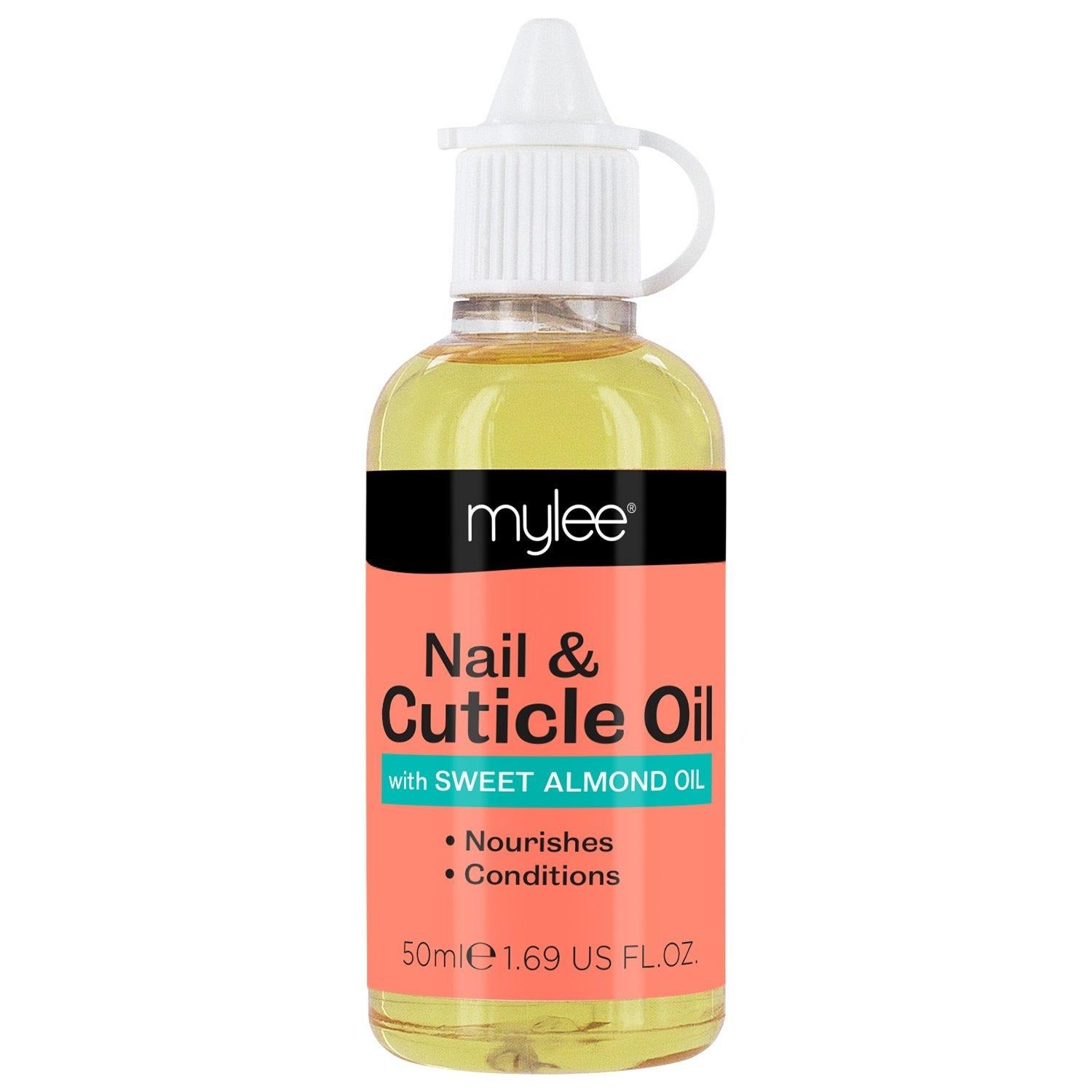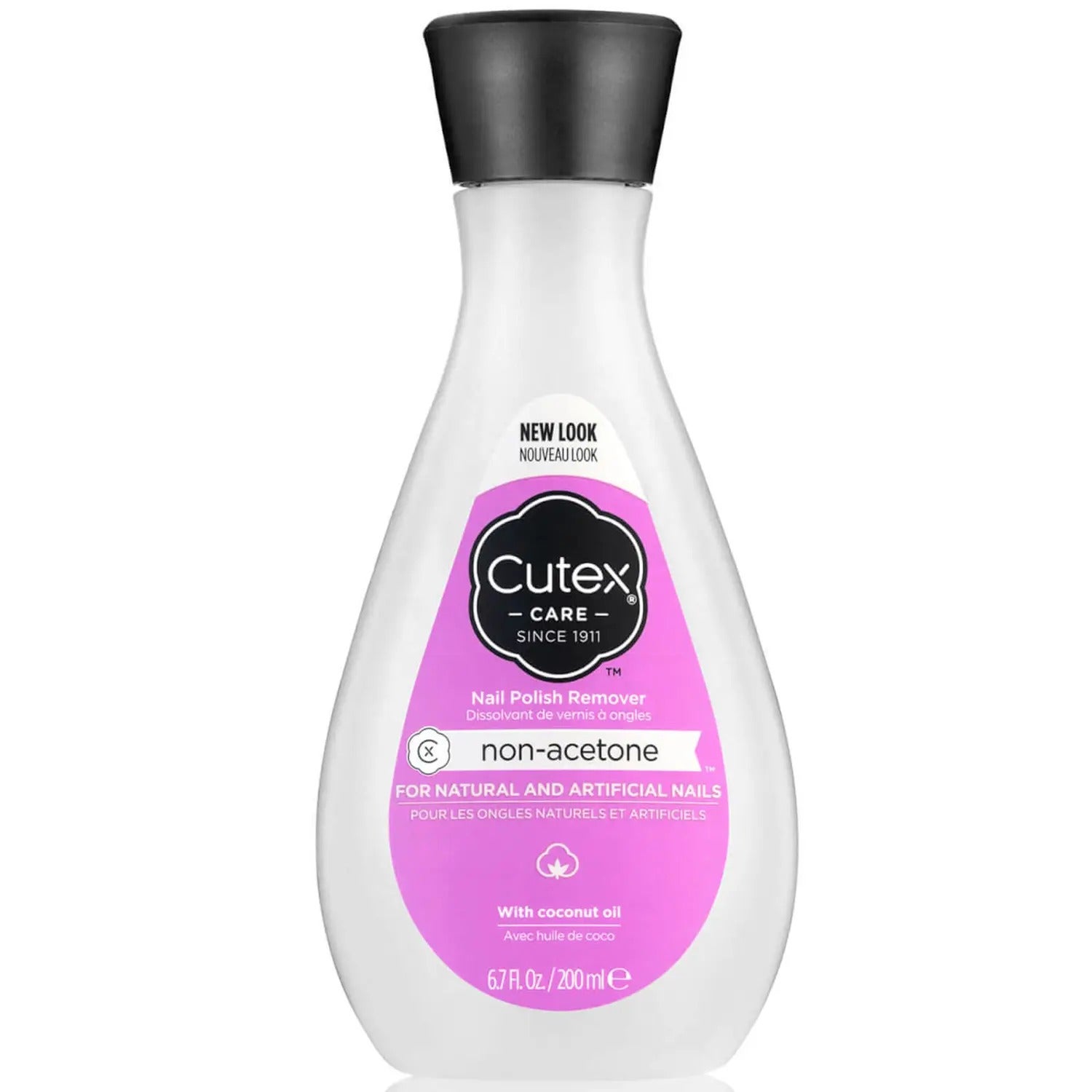I recently met with Dana Stern, MD, a dermatologist who specialises in nails. It's a niche field of study. While other dermatologists may see patients with specific nail concerns every once in a while, Dr Stern's core focus is nail diagnosis, treatment, and surgery, making her an ideal expert to consult in my quest to get my natural nails to their strongest, shiniest, healthiest state, ideally, so I can feel confident going polish-free.
Dr Stern herself doesn't wear nail polish at all. Instead, she treats her nail beds and cuticles to a signature "naked manicure" using only research-backed nail ingredients (some of which she's formulated herself in her nail-care brand, Dr. Dana). Ahead, Dr Stern talks me through the top tips to consider regarding nail health. Even as someone reporting on nail trends for years, I'm caught off guard by how much I don't know. She isn't surprised, explaining that while the nail industry is booming, the focus has primarily been aesthetic, making the nails look pretty. "Nail polish brands are constantly coming out with new colours," Dr Stern explains. "But in the past 10 years, there hasn't been an innovation in formula or education on ingredients for the health of the nails."
AdvertisementADVERTISEMENT
Like dyed hair, your nails can get over-processed
Our hair and nails are both made of keratin, Dr Stern explains. In the same way our hair can be "over-processed" — dry, damaged, or brittle from colour, heat or chemical treatments — so can our nails. How do our nails become over-processed? According to Dr Stern, stripping chemicals (like acetone, which we'll get to) and harsh gel polish and removal services can all cause our nails to become over-processed. Like hair, over-processed nails are dry, brittle, breaking and splitting. You'll probably be able to see and feel it in your nails. "That’s why the 'burn' of a UV lamp [known as 'heat spikes'] happens because the nail has been over-processed, and then it’s more sensitive to light and heat exposure," explains Dr Stern.
Some people can't tolerate gel manicures
While Dr Stern is not a gel polish-wearer, she's not vehemently opposed to gel manicures. "It's just important to be aware of your tolerance," Dr Stern explains. "Some people can tolerate UV exposure to the nail just fine, while others really can't, and I'll see them in my office." How do you know your tolerance? Generally, if your nails are over-processed, you'll have a higher sensitivity or a lower tolerance to gel services — and gel removal. If you have sensitive skin, you may have a lower tolerance to light and heat exposure. It's essential to be mindful of the state of your nails before you have them done professionally. If your natural nails are dry, breaking or sensitive, they may be over-processed, and a gel manicure might not be the best idea until you get them a bit stronger and healthier.
AdvertisementADVERTISEMENT
Glycolic acid is a fantastic nail exfoliant
A few years ago, TikTokers were using glycolic acid toners to exfoliate their nails. Dr Stern says this was partially good and partially misinformed. Clinical research studies have shown the benefit of glycolic acid in both pathological conditions and dry, discoloured nails due to cosmetics like nail polish."Nails are made of dead keratin cells, and so glycolic acid helps to smooth the nail plate," Dr Stern explains. While a skincare toner with glycolic acid is a hack for nail exfoliation, it's not the best place to start. You want a glycolic acid formulated for the nails, Dr Stern explains. A glycolic acid toner has been specifically developed for the skin, whereas a nail glycolic acid has been formulated for the keratin of the nails, so the concentration of ingredients matters.
If you're looking for a glycolic acid nail exfoliant, try the Dr. Dana Nail Renewal System, which features the Glycolic Prep for Nails. It comes in a pen applicator, which is super easy to apply to the nails and dries down quickly. As with your skincare, you want to follow a nail exfoliation with immediate hydration. The Dr. Dana Deep Hydrating Formula is a great second-step formula.
A diamond glass file > emery board
Dr Stern has looked at the tip of a nail filed with an emery board under a microscope and what she saw was not smooth. "It looks like a mountain range," Dr Stern explains, noting that there are ridges and edges that are more likely to catch on things like the fabric of your sweater. So instead of using a regular nail file, Dr Dana recommends a diamond glass file, which is more cylindrical and translucent (chicer, if you ask me). "It's a lot softer on the nail," she explains. The reason why most salons don't use diamond files is because they take a little bit longer to shape the nail. But in my experience, not only is a diamond file just as effective as an emery board file when shaping my nail into a smooth rounded tip, it feels a lot nicer; the sensation is softer and gentler, more like a gentle buffing.
AdvertisementADVERTISEMENT
shop 5 products
Look for a cuticle oil with Indigo Naturalis
I've talked to many nail experts, including Dr Stern, and the number one piece of advice from everyone is: use cuticle oil. The cuticle of the nail is so important because it's the barrier between the dead keratin cells (the nail) and the body. Most cuticle oil works to keep the area hydrated. However, Dr Stern prefers cuticle oil with an ingredient called indigo naturalis. "It's an amazing plant-based ingredient that has been used in Asia for a long time to treat a variety of inflammatory conditions because it restores barrier function," Dr Stern explains. Indigo naturalis can be found in Dr. Dana's Cuticle Oil, which comes in a roller-ball applicator if that's important to you. Also look for a cuticle oil with moisturising vitamin E, like Mylee Sweet Almond Nail & Cuticle Oil, £9.99, or Sally Hansen Nail Care Vitamin E Nail & Cuticle Oil Nail Treatment, £11.
Acetone is aggressive and should be avoided
When it comes to nail damage, we know that polish remover is a key player. "Most polish removers contain solvents, which are essentially paint thinners," Dr Stern explains. "The ingredient that most of us are most familiar with is acetone. The reason people use acetone in nail polish remover is because it's the fastest-working solvent, but it's also the harshest." Instead, Dr Stern recommends looking for a polish remover with propylene carbonate in place of acetone, which is a solvent that will remove polish, but is a lot gentler on the nail. Try Cutex Non-Acetone Nail Polish Remover, £2.50.
AdvertisementADVERTISEMENT
Consider Halal-friendly brands
We often hear about "clean" and "non-toxic" identifiers, which have come to mean nothing because every beauty brand and retailer has a different definition of what that means. But a lesser-known certification to look out for in your nail care is 'Halal-safe.' Practicing Muslims can't wear traditional nail polish during prayer because it acts as a barrier between water and oxygen and the body. They also can’t use any animal-derived ingredients or alcohols on their nails. So if a nail brand passes Halal ingredient compliance you know that the formulation is verified vegan, cruelty-free, alcohol-free and breathable.
At Refinery29, we’re here to help you navigate this overwhelming world of stuff. All of our market picks are independently selected and curated by the editorial team. If you buy something we link to on our site, Refinery29 may earn commission.
